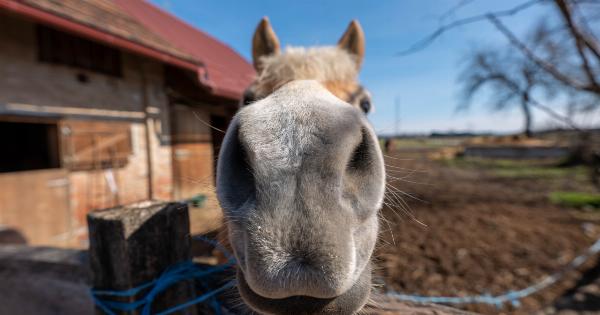Allergic rhinitis, commonly known as hay fever, is a condition characterized by inflammation of the nasal passages due to an allergic reaction.
It can be a significant problem for children, causing various symptoms that can affect their overall health and well-being. In this article, we will explore the signs and symptoms of allergic rhinitis in children, helping parents and caregivers recognize and manage this condition effectively.
1. Sneezing
Sneezing is one of the most common symptoms of allergic rhinitis in children. It occurs as a response to irritation and inflammation of the nasal lining caused by an allergen.
Frequent and persistent sneezing may disrupt a child’s daily activities and negatively impact their quality of life.
2. Nasal Congestion
Nasal congestion, or a stuffy nose, is another hallmark symptom of allergic rhinitis. It happens when the blood vessels in the nasal passages become swollen and inflamed due to exposure to allergens.
Nasal congestion can make breathing difficult for children and may lead to sleep disturbances and decreased energy levels.
3. Runny Nose
A runny nose, also known as rhinorrhea, is a common sign of allergic rhinitis in children. It is characterized by the discharge of clear, thin mucus from the nose.
This symptom is a result of the body’s attempts to flush out the allergens causing the inflammation. A runny nose can be bothersome and may cause skin irritation around the nose due to repeated wiping.
4. Itchy Eyes
Allergic rhinitis often affects the eyes, leading to itching, redness, and watery discharge. Itchy eyes can be particularly distressing for children, as they may rub or scratch them, further aggravating the irritation.
Persistent eye itching should be addressed promptly to prevent complications and improve the child’s comfort.
5. Watery Eyes
Excessive tearing and watery eyes, medically known as epiphora, are classic symptoms of allergic rhinitis. They occur due to the body’s inflammatory response to allergens, which can affect the tear ducts and tear film stability.
Watery eyes can interfere with a child’s vision and may cause discomfort or blurred vision.
6. Itchy Throat and Ears
In addition to nasal and eye symptoms, allergic rhinitis can cause itching in the throat and ears. This sensation may be a result of postnasal drip, which occurs when mucus from the nasal passages drips down the back of the throat.
Itchy throat and ears can be bothersome for children and may lead to a persistent cough or throat clearing.
7. Fatigue and Irritability
Children with allergic rhinitis often experience fatigue and irritability. Nasal congestion, disrupted sleep patterns, and the persistent discomfort associated with this condition can lead to decreased energy levels and mood disturbances.
It is essential to address these symptoms to ensure the child’s optimal well-being and quality of life.
8. Allergic Shiners
Allergic shiners refer to dark circles or puffy, swollen areas under the eyes caused by nasal congestion. These symptoms may make a child appear tired or restless, even after an adequate amount of sleep.
Allergic shiners are a visual indicator of allergic rhinitis and can be a helpful diagnostic clue for parents and healthcare professionals.
9. Nasal Speech
Nasal speech, often sounding like the child has a “stuffy” or “blocked” nose, can be indicative of allergic rhinitis.
The nasal blockage and congestion caused by this condition can affect the child’s ability to produce clear speech, leading to a muffled or nasal-sounding voice.
10. Allergic Salute
Allergic salute is a term used to describe the gesture children often make by rubbing their nose upwards with the palm of their hand. This action is an instinctive response to alleviate nasal itching or congestion.
The repetitive rubbing of the nose can lead to skin irritation, nosebleeds, and a transverse crease across the bridge of the nose.
Conclusion
Allergic rhinitis can significantly impact a child’s daily life, causing a range of symptoms such as sneezing, nasal congestion, runny nose, itchy eyes, watery eyes, and fatigue.
It is crucial for parents and caregivers to recognize these signs and symptoms to seek appropriate diagnosis and management. Early intervention and appropriate treatment can help alleviate the child’s discomfort and improve their overall quality of life.



























